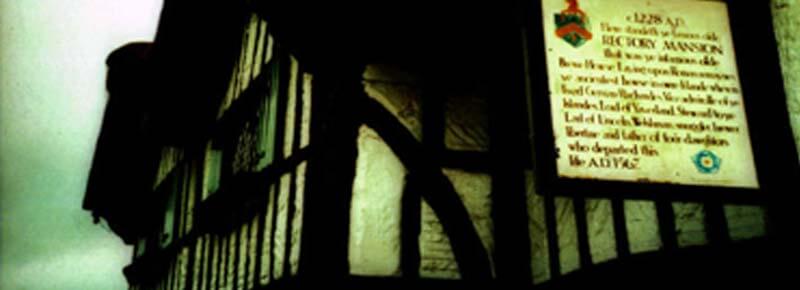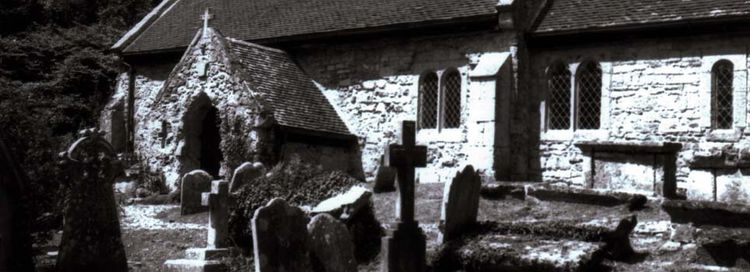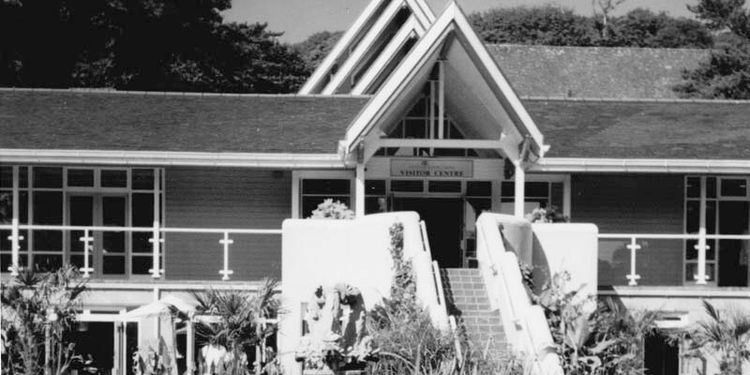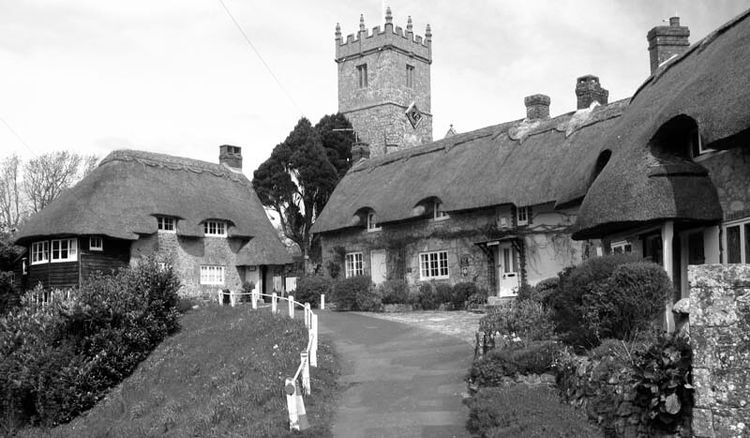Brading. Ghosts of the Isle of Wight, with Margo Williams.

Old Rectory. Most Haunted Mansion
THE OLD RECTORY MANSION in Brading is the Isle of Wight’s most famously haunted building.
Local legend claims its supernatural sitting tenants include the foreign ghost of a m.rdered Frenchman who cursed the house until his bones were returned to his native land.
Repatriation was attempted but no one wanted them and some residents believe this rejection made the haunting worse.
Many intrepid ghost-hunters have ventured to stay the night in this building; one room in particular in the white and black timbered wing. Then next morning tell of ghostly footsteps, rattling handles and terrifying screams.
Some report sightings of a tall figure gliding through the wall into the room. At such moments the name Louis de Rochefort is mentioned and accusations turn to m.rder.

Ghost Island
Ghost experts have named the Isle of Wight ‘Ghost Island’ which is a scary thought indeed, for it raises life and death questions. Are those people who live on the island more likely to become ghosts?
Or do ghosts choose to visit the Isle of Wight after death; does Charon the boatman also ferry those who wish it, across the Solent rather than the Styx, so avoiding Hades’ realm of shades?
It is true that I have found a considerable number here, and this may be because since Victorian times so many people have come here to visit or holiday; and wherever humans congregate in life they often return to after their de.th.
So this is a ghost island for those of a certain period; which means, probably, in 100 years or so the Greek islands and Spain will be busy with ghostly Brits from our present period.
That is of course, assuming you do believe in ghosts.
Heaven & Hell
The matter of life and de.th and what happens after has provoked more than just a war of words and ideas. Most scientists insist there is no proof of a ghost in the machine of the body to survive de.th.
In reply, religious leaders insist there is and that proof is not necessary because faith is sufficient; and so long as we believe what they tell us then we will be admitted into Heaven.
If we do not then most certainly we will plunge down to Hell.

Some determined individuals are even led to believe they can reach Heaven more swiftly by splattering themselves into the afterlife, and in so doing send the souls of unbelievers in the opposite direction.
Science is helpless in the face of such extreme religious devotion.
Its insistence that lack of evidence proves the point does not deter those who say just because you cannot see the soul, does not mean it does not exist.
What is certain, with religion, is too many people discover the truth sooner than they intended. But for those of us still here on earth, horrified by the carnage caused by this impasse between religion and science, what proof can we know?
For most of us find ourselves at some quiet moment wondering what happens when we die? Is that really the end, as science would have us believe?
After all the pain, joy and experience; is all the memory of our lifetime’s journey really just snuffed out in some dark oblivion? Or is there a Heaven, wherein a friendly father awaits our arrival?
The Mansion M.rder
According to legend the Mansion m.rder happened here one night in the 1640s during the reign of King Charles I.
Since Tudor times it housed a quay-side inn and its rooms, formerly the Old Rectory Mansion, were used for accommodation of every variety.
The victim is believed to have come from France; he ate a meal here, drank wine and then retired upstairs to the bedroom overlooking the church. Later that night as he slept, someone entered the chamber and with extreme prejudice inserted a knife.
But before he died the Frenchman croaked a curse, so the legend claims; with his final breath he spluttered, ‘...I will haunt zis house until my remains are returned to my native land.’
Since that fateful night people claim the angry restless soul of Louis de Rochefort roams the house in search of his corpse that somehow was lost.
Louis De Rochefort
Until by chance, 300 years later, it was found.
During excavations in the 1960s workmen searching for the water-main found a bone, and then more, then unearthed an entire skeleton. When the landlord saw these remains he felt certain they had found Louis’ bones.
‘At last!’ cheered the people of Brading, ‘Louis can go home.’
And so he did. Collected up and casketed out, Louis’ bones were flown to France, his homecoming advertised in the French national press but no one claimed him.

So Louis came back to the Old Rectory Mansion, laid in display in a glass-topped coffin resting in French soil to keep him quiet.
But he would not rest, for many residents and visitors heard the floorboards creak with ghostly footstep and assumed Louis’ supernatural sulk had resumed.
Various investigators have tried braving the room for a night only to leave before the morning light, fearful of the angry Frenchman’s ghostly antics.
For many years the building housed a Wax Works museum with displays of historic scenes, including the gruesome m.rder in the timber-striped room overlooking the church.
The building retains much of its original character, with a galleried courtyard; and it was there I first saw the ghost.
How to Catch a Ghost
People sometimes ask me if there is a ‘best time’ to catch a ghost; do I stay overnight in a haunted location and deploy ghost-sensitive equipment such as cotton trails, bells and sensor-activated cameras.
"No," is my answer. My method is equally simple and complicated; the only things needed are basic recording equipment, paper and pen or pencil.
However, more complicated is my own sensory apparatus: I can hear frequencies most other people cannot; the curious properties and results of which I will relate in the chapters of this book.
That is how I came to discover the ghost of the Old Rectory Mansion was not foreign but local.
I entered the scene-of-crime room where the m.rder happened; the waxwork copy corpse of a man lay exhibited in display on a bed, cold and still. A dagger buried hilt-deep in his bloodied chest, a flintlock pistol on the pillow beside his head.
Paper and pencil ready to record anything I heard.
The only available information is the legend, and previous witnesses’ ghost-sighting descriptions of an ‘aristocratic looking’ figure, whatever that meant.
However, the sound of his voice when he spoke confirmed an important fact: the ghost of the Old Rectory Mansion was an Englishman, not French.
“...It was I,” he said, in English. “A man of great importance around here. I m.rdered the Frenchman. I roam this whole building. Not just where a figure of him is on show. I stabbed him in a fit of anger. He accused me wrongly. Insults I took not kindly.
He insulted me again. I left him to d.e, and no one even thought it was me who performed so dastardly a deed, so enjoyed a good life. Could not find peace when my life ended, but now maybe can reach the paradise I crave.”
That short confession was all he said to me. No date to locate the incident; no name by which to identify him, only his claim to VIP status.
If, as is assumed, the m.rder took place during the 1640s that time period included three local nobles of note. Closest, Sir John Oglander of Nunwell and Robert Dillington of Knighton Gorges house.
Good Sir John’s gentleness is fondly remembered. Dillington, unlike a namesake uncle, had a reputation for ill-temper. Third, feisty royalist Sir Edward Worsley of Gatcombe who attempted a daring rescue of King Charles I from Carisbrooke Castle.
The confession opened a different line of enquiry to when the case closed on assumptions Louis was an emissary on his way with a message from the king, and his k.ller was an Army assassin.
Insult disputes in the UK ordinarily were resolved by duelling, but in this case hot-temper bypassed that protocol. Duellist victors described success as ‘satisfaction’ in honorable combat.
The ghost described his own rash response as “dastardly” though didn’t confirm his enemy d.ed in bed, which might explain that choice of adjective.
However, cowardice, cruelty and impatience is insufficient profile information; so this m.rder mystery must remain unsolved, for now. Or perhaps the bones do not belong to Louis, and that is why no one claimed him?
Maybe they belonged to the ghost of St Mary's church.
Thank you for your company on this short tour of Isle of Wight mysteries and haunting. If you would like to know more about Margo Williams' investigations in Brading and other matters of hell and heaven, read this book. Now available from Amazon.



